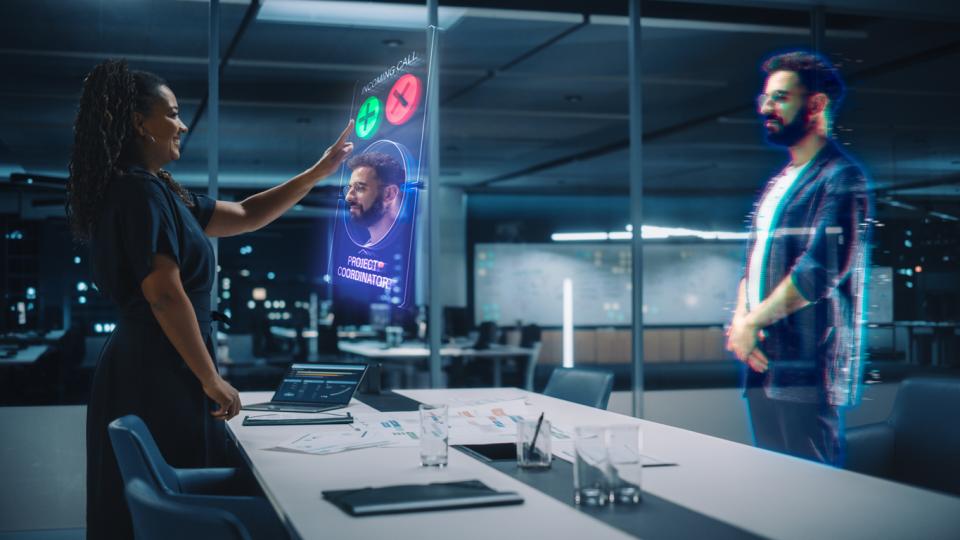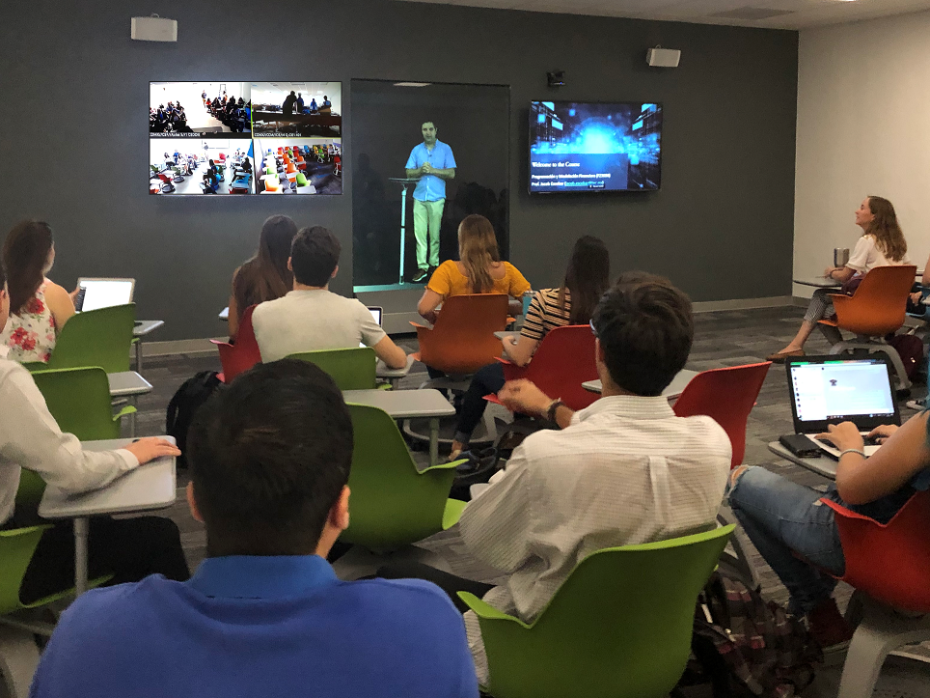Higher education institutions are always looking for innovative ways to provide enriching learning experiences. Some use telepresence to do this, arguing that it enhances the interaction between students and their teachers.
What is telepresence?
Telepresence combines holographic technology with online collaboration tools to create a unique learning environment. It allows an individual to execute actions in a remote or virtual setting as if they were physically present.
This semester, we incorporated telepresence, in collaboration with two colleagues from different regions, into one of our courses. In this resource, we identify several advantages to this approach.
1. A greater sense of intimacy
The use of holographic technology brings people closer than traditional video conferencing. It can help students feel as though they are in the same room with their professors, even if they are in a completely different country. It comes as no surprise that this significantly improves communication and comprehension, evidence of which we saw when we carried out surveys at the end of the course.
2. Students benefit from diverse teaching styles
One of the main advantages of telepresence is the ability to connect students with teachers from different regions. This means they have the opportunity to experience an array of teaching styles and perspectives, greatly enriching the learning experience and broadening students’ horizons.
Thanks to the fact that our course’s learning objectives and competencies are clearly established, teachers with very diverse experience and perspectives can contribute without jeopardising its integrity. Our collaboration allowed students to be taught by three different teachers in a five-week course. In addition to our usual tutor, we had a professor with extensive industry experience who shared insight into his professional practice and another with a more academic background who was well placed to share perspectives on and analysis of theoretical models. Each had a different style of engaging with students.
3. Students can interact with others from different regions
In addition to being connected to professors from different campuses across Monterrey Institute of Technology, students on our course were also able to interact with peers from other regions in Mexico by taking part in contests or activities facilitated by collaboration tools. We used Socrative, a platform that allows users in different locations to compete against each other in races in real time. Each campus had a “racer” that advanced when a member of their team answered a question correctly. This enhanced cultural awareness and ideas exchange, which further enriched students’ learning experiences.
Feedback from students participating in this training unit indicated that they highly valued interaction with their peers from other campuses, as forming meaningful connections is an essential part of the university experience. Telepresence breaks down geographical barriers and creates a global learning environment.
- Resource collection: Making online nearning fun
- Serious play: boosting engagement in online courses through games
- Sparking online joy: five ways to keep students engaged
4. It facilitates the use of online collaboration tools
The use of telepresence technology comes hand in hand with the use of other online collaboration tools that facilitate interaction and teamwork, such as Menti, Kahoot and Padlet. Since telepresence makes teachers seem as though they are in the same room at once, they can moderate contests in multiple classrooms simultaneously. Students can log into these platforms and monitor progress on their phones or laptops or a screen in the classroom. They can also share documents, conduct real-time surveys, participate in online discussions and collaborate on projects.
5. It promotes healthy competition
Telepresence facilitates activities that promote healthy competition between students in different participating regions or campuses. Cross-regional challenges can inspire students to work harder and help them bond with other team members.
Implementing telepresence
Introducing telepresence into the classroom brings varied benefits. However, there are some challenges that one must keep in mind to implement it successfully.
- Paradigm shift: as educators, we are now used to talking to a screen, but the feeling of being broadcasted as a hologram remotely might be daunting.
- Infrastructure: as with any technology-focused innovation, having access to the right tools and technology is key.
- Training: learning how to use the technology is a fundamental aspect. You need to know how to use the interactive elements, how to manage different screens from the broadcasting room and how to manage a class with students in different locations so that everyone feels included.
- Student involvement: educators must be able to create an atmosphere in which students feel motivated to learn and confident about participating and interacting with peers in other locations. Where possible, refer to students by name. Ensure you explain the benefits of working with students in different locations and prepare well for the sessions so you can answer any questions and address any concerns.
Implementing cutting-edge technology enriches the learning experiences and prepares students for an increasingly interconnected and diverse world. By connecting students with teachers and peers from different regions, telepresence is transforming the way we teach and enriching the learning experience.
Sidney Ornelas is a professor at Tecnologico de Monterrey.
If you would like advice and insight from academics and university staff delivered direct to your inbox each week, sign up for the Campus newsletter.




comment